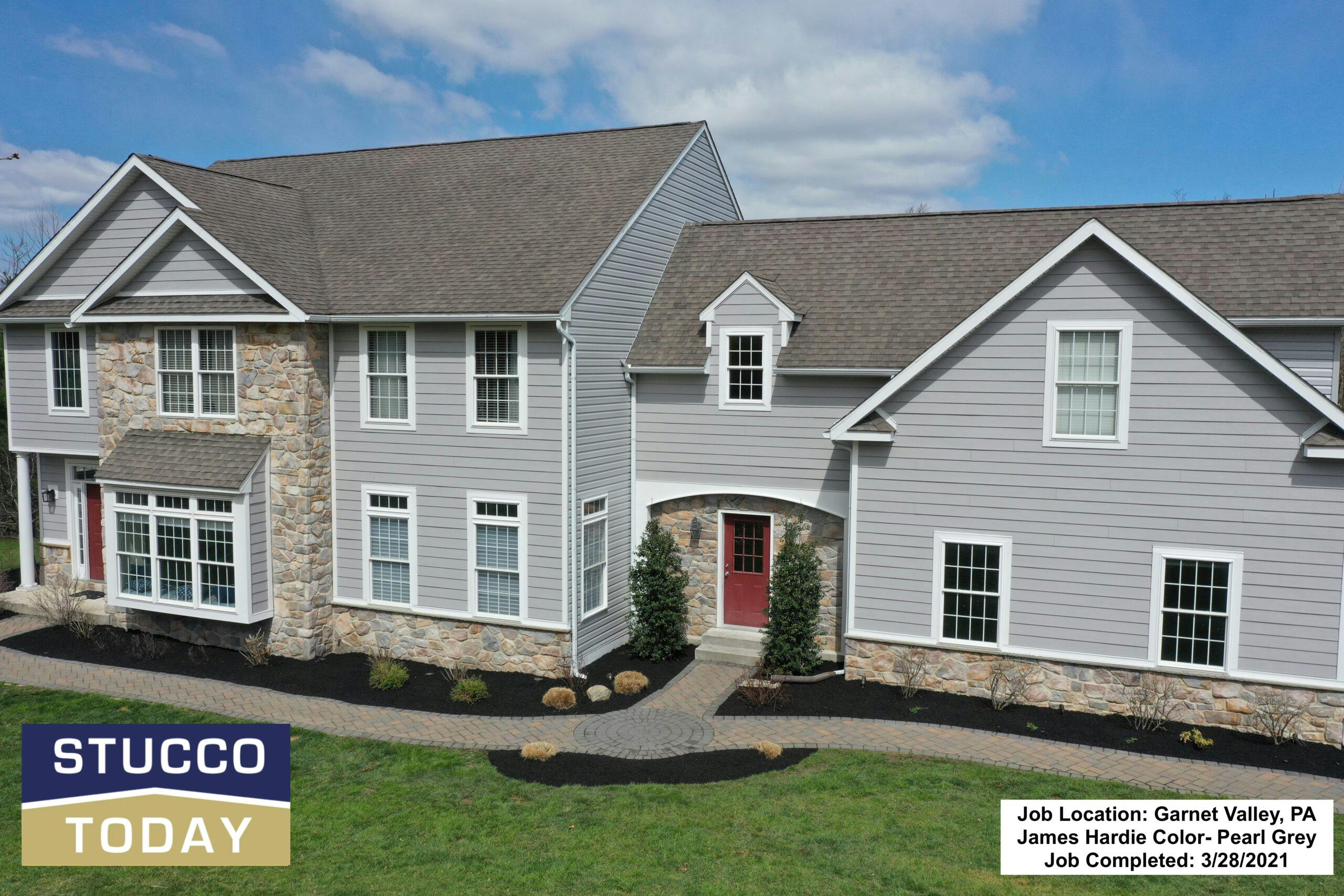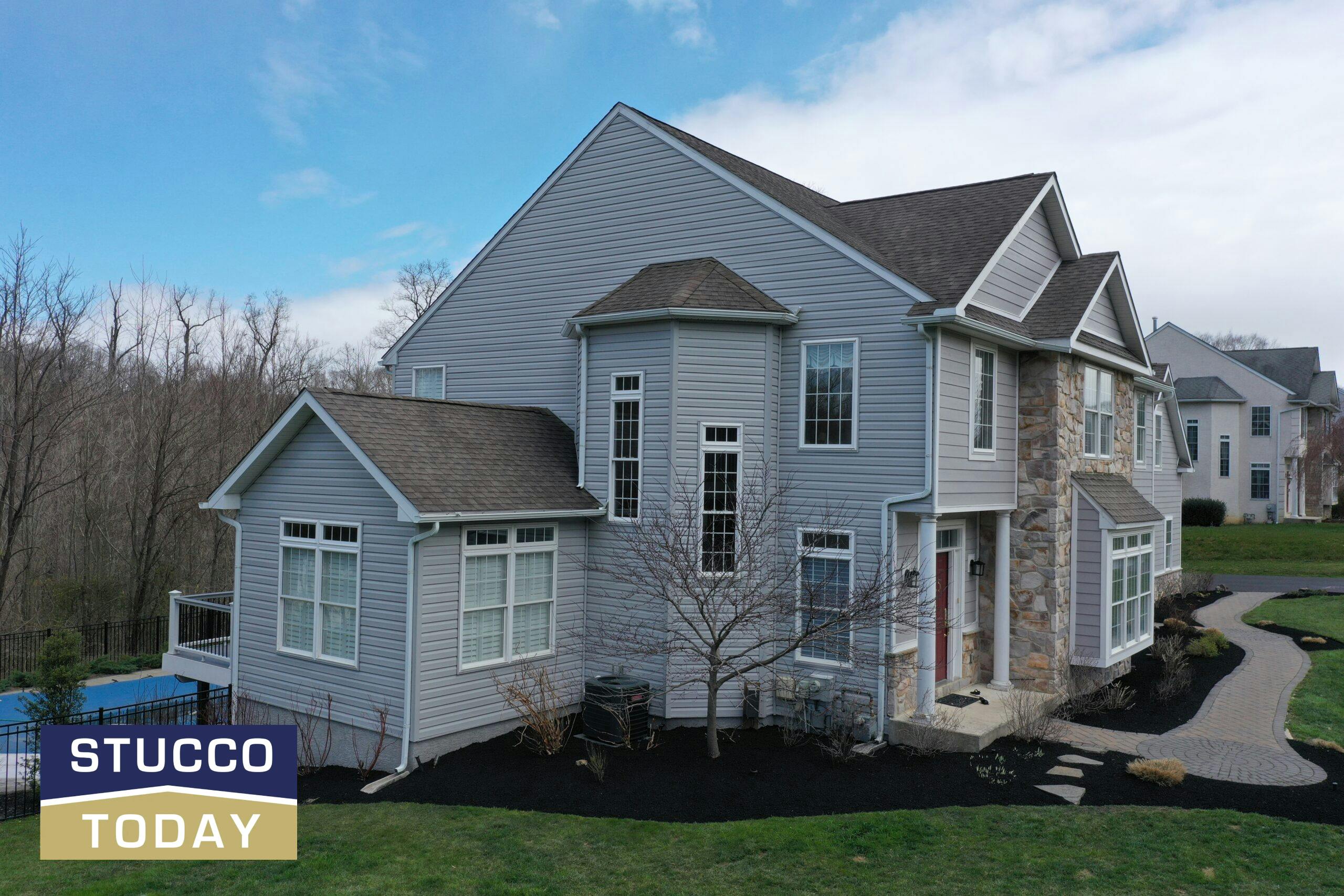There’s a lot of competition when it comes to the home siding market. Vinyl, wood, manufactured wood, and stone and brick veneers are all popular choices. So how does James Hardie’s fiber cement siding, the #1 siding option in America, stand up to this competition?
To find out, we need to take a look at the aesthetic of James Hardie products and how they compare to the other options when faced with high temperatures and fire, freezing and expansion caused by moisture, and damaging pests.
Natural Wood Appearance
James Hardie’s fiber cement products have the same, highly desirable appearance as natural wood. From a distance, it’s impossible to tell the difference between natural wood and fiber cement panels that are meant to mimic natural wood’s appearance.
Some vinyl siding options also attempt to mimic this appearance. However, it’s not as effective at fooling the eye as fiber cement is. That’s because fiber cement panels are much thicker than vinyl panels. This extra thickness allows for the wood pattern grooves to be deeper and more pronounced.
Considering that James Hardie siding is less expensive than natural wood siding, you can get the same great look for less.
High Temperatures and Fire

The exterior of your home needs to be able to deal with a wide range of temperatures, from the hottest of summers to the coldest of winters. Here in the Northeast US, temperatures can fluctuate wildly throughout the year and from year to year.
When it comes to withstanding high temperatures, fiber cement siding from James Hardie is one of the best home exterior options. Cement doesn’t warp when exposed to heat, which can’t be said about all other siding materials out there.
For example, vinyl siding may begin to melt when exposed to direct sunlight on hot days. It’s even more susceptible to this if the sunlight is reflecting off another surface and being directed at a portion of the vinyl siding.
But how does fiber cement hold up against the most extreme temperatures your home is ever likely to face: Fire? Unsurprisingly, it’s one of the best siding materials for preventing the spread of exterior fire.
Vinyl will melt when exposed to fire, while wood and manufactured wood will actively spread the fire further. But fiber cement works similarly to stone and brick veneer in that it can prevent the spread of fire for a period of time.
Specifically, James Hardie’s fiber cement siding is rated to stop the spread of fire for up to one hour. In the event of a fire, this gives your family time to get out of the house and for the fire department to arrive before the damage spreads.
Moisture, Freezing, and Expansion
Moisture is a cause of home siding damage that you may not expect. It can lead to the rotting of both natural and manufactured wood if it gets beneath the sealant. But even if rotting doesn’t occur, the moisture can be absorbed by the wood, leading to additional issues.
When moisture is absorbed into wood siding, it causes it to expand. This expansion must be accounted for when installing the panels, which means leaving gaps between them that will be closed by eventual expansion.
With fiber cement siding, expansion due to moisture doesn’t need to be taken into consideration. The panels can be applied to the exterior of your home without leaving unsightly gaps that will, hopefully, close over time. This also leads to a more uniform installation.
When temperatures drop, this absorbed moisture can also cause wood to crack as the water freezes. This can be especially damaging if there is a cycle of freezing and thawing.
Again, James Hardie’s fiber cement siding doesn’t have to worry about freeze-thaw cycles because it doesn’t absorb moisture to the same extent that wood does. It’s affected by moisture about as much as stone and brick are, which is to say, not very much.
And while vinyl siding doesn’t absorb moisture either, it can become brittle when the temperature drops. This brittleness makes vinyl siding more susceptible to wind and impact damage.
Pest Prevention

When selecting the type of siding to put on your home, chances are you aren’t thinking about pest prevention. However, pests can cause significant damage to vinyl and both natural and manufactured wood siding.
Pests can burrow into the siding, creating holes through which moisture can intrude. This moisture then wreaks havoc within your walls if it’s unable to drain properly. And, that’s not to mention the damage the pests themselves can do within your walls.
For wooden siding, the most common pests are insects of various kinds. Nobody wants insects living within their walls. Luckily, cement fiber siding solves this icky problem because it’s too tough for insects to burrow into.
Insects can burrow into vinyl siding, too. But, other, larger pests can also get into vinyl siding easier. If vinyl siding is broken or removed by high winds, birds and rodents can make their nests within the gap in your siding.
Since James Hardie’s fiber cement siding is heavier than vinyl, it won’t be damaged by high winds as easily. This means there are no gaps for birds and rodents to get into.
The James Hardie Difference
How do James Hardie products stand up against the competition? They have the same great aesthetic as natural wood, resist high temperatures fire, moisture, and freezing about as good as stone veneer, and prevent pests from getting into the walls of your home.
James Hardie Installation with Stucco Today
Are you looking to upgrade the siding on your home? Stucco Today is your trusted local James Hardie siding installer. Contact us today to learn more about the benefits of James Hardie fiber cement products.

